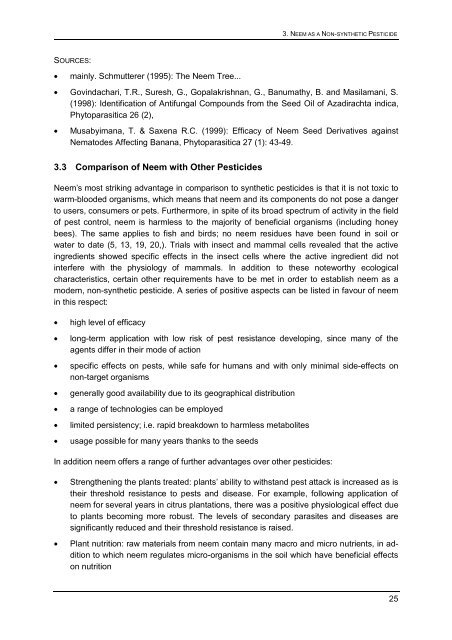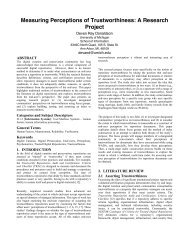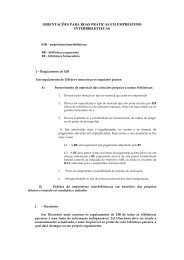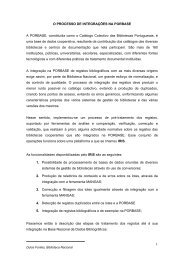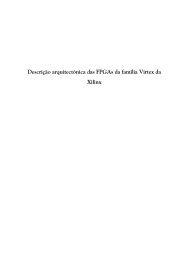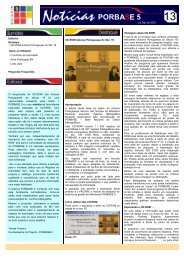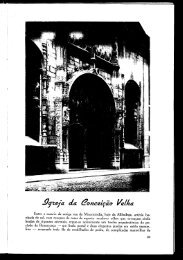Status report on global Neem usage - Biblioteca Nacional de Portugal
Status report on global Neem usage - Biblioteca Nacional de Portugal
Status report on global Neem usage - Biblioteca Nacional de Portugal
You also want an ePaper? Increase the reach of your titles
YUMPU automatically turns print PDFs into web optimized ePapers that Google loves.
SOURCES:<br />
• mainly. Schmutterer (1995): The <strong>Neem</strong> Tree...<br />
3. NEEM AS A NON-SYNTHETIC PESTICIDE<br />
• Govindachari, T.R., Suresh, G., Gopalakrishnan, G., Banumathy, B. and Masilamani, S.<br />
(1998): I<strong>de</strong>ntificati<strong>on</strong> of Antifungal Compounds from the Seed Oil of Azadirachta indica,<br />
Phytoparasitica 26 (2),<br />
• Musabyimana, T. & Saxena R.C. (1999): Efficacy of <strong>Neem</strong> Seed Derivatives against<br />
Nemato<strong>de</strong>s Affecting Banana, Phytoparasitica 27 (1): 43-49.<br />
3.3 Comparis<strong>on</strong> of <strong>Neem</strong> with Other Pestici<strong>de</strong>s<br />
<strong>Neem</strong>’s most striking advantage in comparis<strong>on</strong> to synthetic pestici<strong>de</strong>s is that it is not toxic to<br />
warm-bloo<strong>de</strong>d organisms, which means that neem and its comp<strong>on</strong>ents do not pose a danger<br />
to users, c<strong>on</strong>sumers or pets. Furthermore, in spite of its broad spectrum of activity in the field<br />
of pest c<strong>on</strong>trol, neem is harmless to the majority of beneficial organisms (including h<strong>on</strong>ey<br />
bees). The same applies to fish and birds; no neem residues have been found in soil or<br />
water to date (5, 13, 19, 20,). Trials with insect and mammal cells revealed that the active<br />
ingredients showed specific effects in the insect cells where the active ingredient did not<br />
interfere with the physiology of mammals. In additi<strong>on</strong> to these noteworthy ecological<br />
characteristics, certain other requirements have to be met in or<strong>de</strong>r to establish neem as a<br />
mo<strong>de</strong>rn, n<strong>on</strong>-synthetic pestici<strong>de</strong>. A series of positive aspects can be listed in favour of neem<br />
in this respect:<br />
• high level of efficacy<br />
• l<strong>on</strong>g-term applicati<strong>on</strong> with low risk of pest resistance <strong>de</strong>veloping, since many of the<br />
agents differ in their mo<strong>de</strong> of acti<strong>on</strong><br />
• specific effects <strong>on</strong> pests, while safe for humans and with <strong>on</strong>ly minimal si<strong>de</strong>-effects <strong>on</strong><br />
n<strong>on</strong>-target organisms<br />
• generally good availability due to its geographical distributi<strong>on</strong><br />
• a range of technologies can be employed<br />
• limited persistency; i.e. rapid breakdown to harmless metabolites<br />
• <strong>usage</strong> possible for many years thanks to the seeds<br />
In additi<strong>on</strong> neem offers a range of further advantages over other pestici<strong>de</strong>s:<br />
• Strengthening the plants treated: plants’ ability to withstand pest attack is increased as is<br />
their threshold resistance to pests and disease. For example, following applicati<strong>on</strong> of<br />
neem for several years in citrus plantati<strong>on</strong>s, there was a positive physiological effect due<br />
to plants becoming more robust. The levels of sec<strong>on</strong>dary parasites and diseases are<br />
significantly reduced and their threshold resistance is raised.<br />
• Plant nutriti<strong>on</strong>: raw materials from neem c<strong>on</strong>tain many macro and micro nutrients, in additi<strong>on</strong><br />
to which neem regulates micro-organisms in the soil which have beneficial effects<br />
<strong>on</strong> nutriti<strong>on</strong><br />
25


